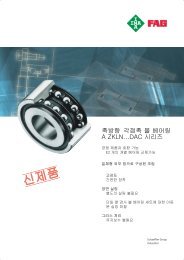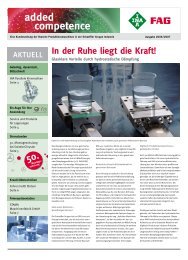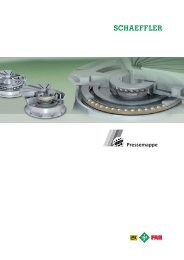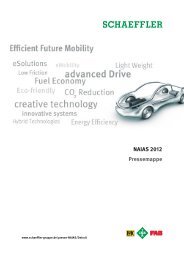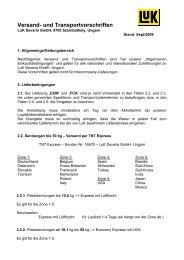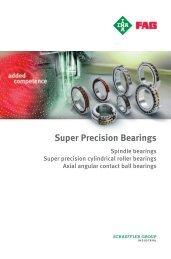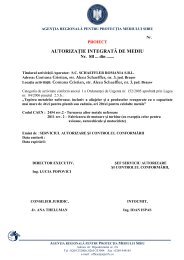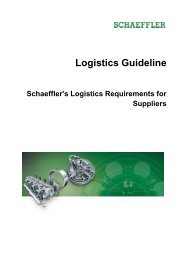Create successful ePaper yourself
Turn your PDF publications into a flip-book with our unique Google optimized e-Paper software.
Figure 15 Increased volume expansion with increased<br />
piston area<br />
This finding has already been verified using<br />
prototypes. Based on a <strong>system</strong> that is usual for<br />
today (master cylinder area = 285 mm², slave<br />
cylinder area = 775 mm²) the cylinder areas<br />
were increased by 30 % as an example (master<br />
cylinder area = 380 mm², slave cylinder area =<br />
1025 mm²). As a result of this step, the travel<br />
loss on the clutch pedal was reduced by 30 %<br />
from 25 mm to 17 mm with a <strong>release</strong> load of<br />
2000 N (Figure 16). A remarkable improvement<br />
based on an overall consideration of clutch <strong>and</strong><br />
operation.<br />
This highlights a decade-old error – one made<br />
even by the experts.<br />
The usual surface areas of the master <strong>and</strong><br />
slave cylinders today arose largely from the<br />
st<strong>and</strong>ardized size of the brake cylinder. Those,<br />
however, must now be called into question<br />
<strong>and</strong> possibly redefined in light of this new<br />
finding.<br />
Figure 16 Relationship between pedal travel loss <strong>and</strong> <strong>release</strong> load<br />
LuK SYMPOSIUM 2006<br />
Measures for<br />
reducing operating<br />
load<br />
The first <strong>and</strong> also obvious approach was<br />
described in the previous section – optimizing<br />
the existing <strong>system</strong>. From what is known today,<br />
this potential can be used to reduce the operating<br />
loads by about 10 % to 15 %, so that engine<br />
torques up to 350 Nm can be covered with<br />
acceptable pedal travels <strong>and</strong> loads. Over <strong>and</strong><br />
above, further measures are necessary in order<br />
to be able to attain operating loads lower than<br />
110 N. There are a number of options for doing<br />
this, which are described in the following sections:<br />
• Work redistribution<br />
• Energy accumulators<br />
• Multi-plate clutch<br />
• External energy (active support)<br />
• <strong>Clutch</strong>-by-wire<br />
Work redistribution<br />
<strong>Clutch</strong> <strong>and</strong> <strong>release</strong> <strong>system</strong> 2<br />
In work redistribution, the total work remains<br />
constant <strong>and</strong> is merely distributed more favorably<br />
over the pedal travel. The principle is simple.<br />
The work should be increased where the pedal<br />
load is currently low, so that it can be reduced<br />
where the pedal load is currently high (Figure 17).<br />
Reduced-load clutches have in principle a<br />
strong “drop-off” in the <strong>release</strong> load characteristic<br />
because of the approximation of the<br />
diaphragm spring to the cushion spring curve. A<br />
35



